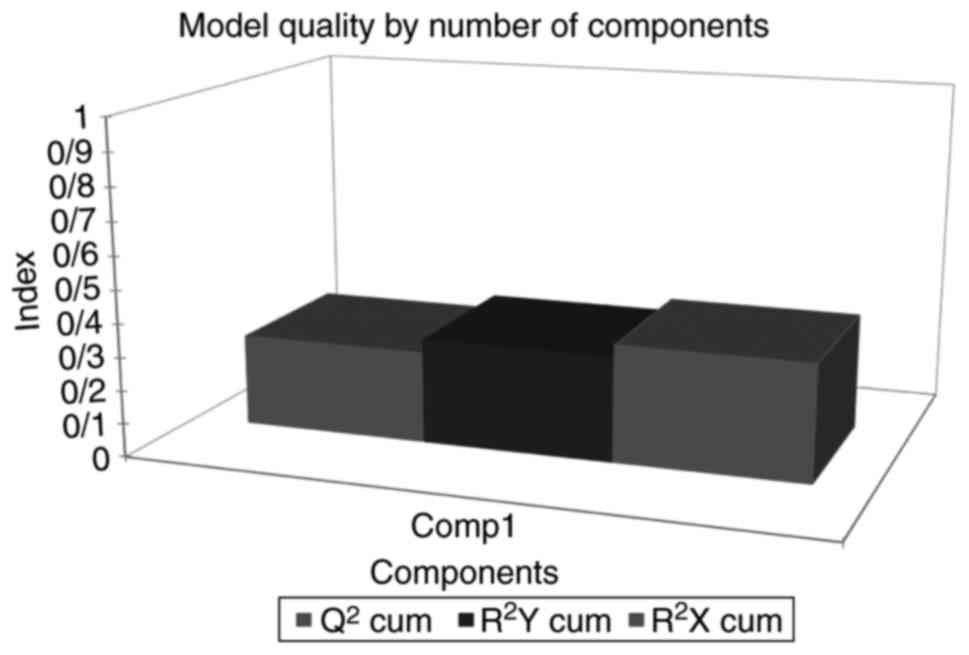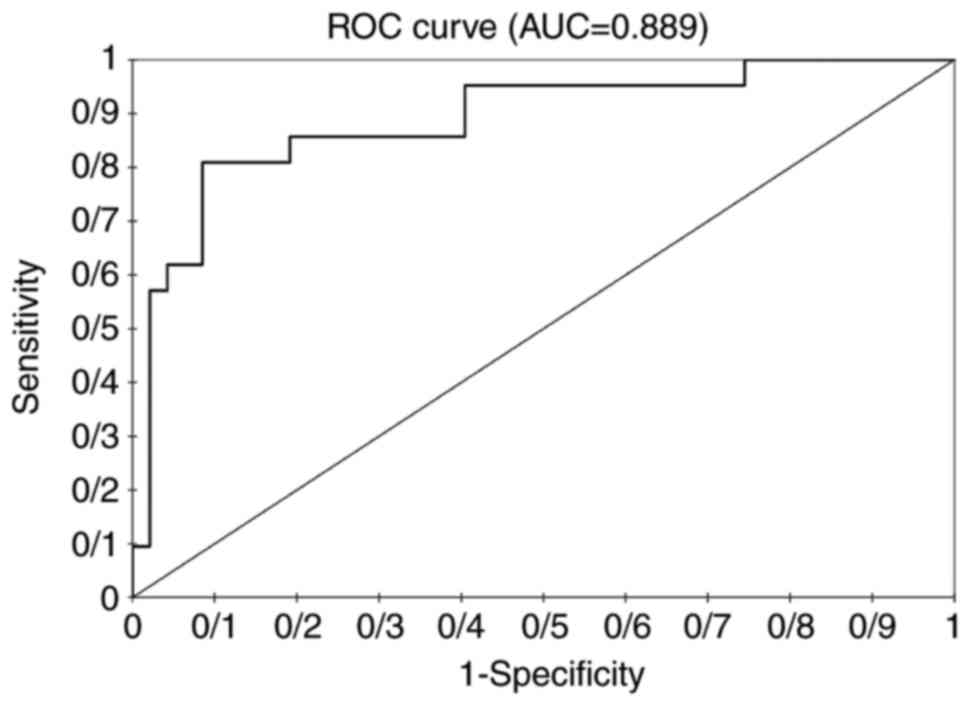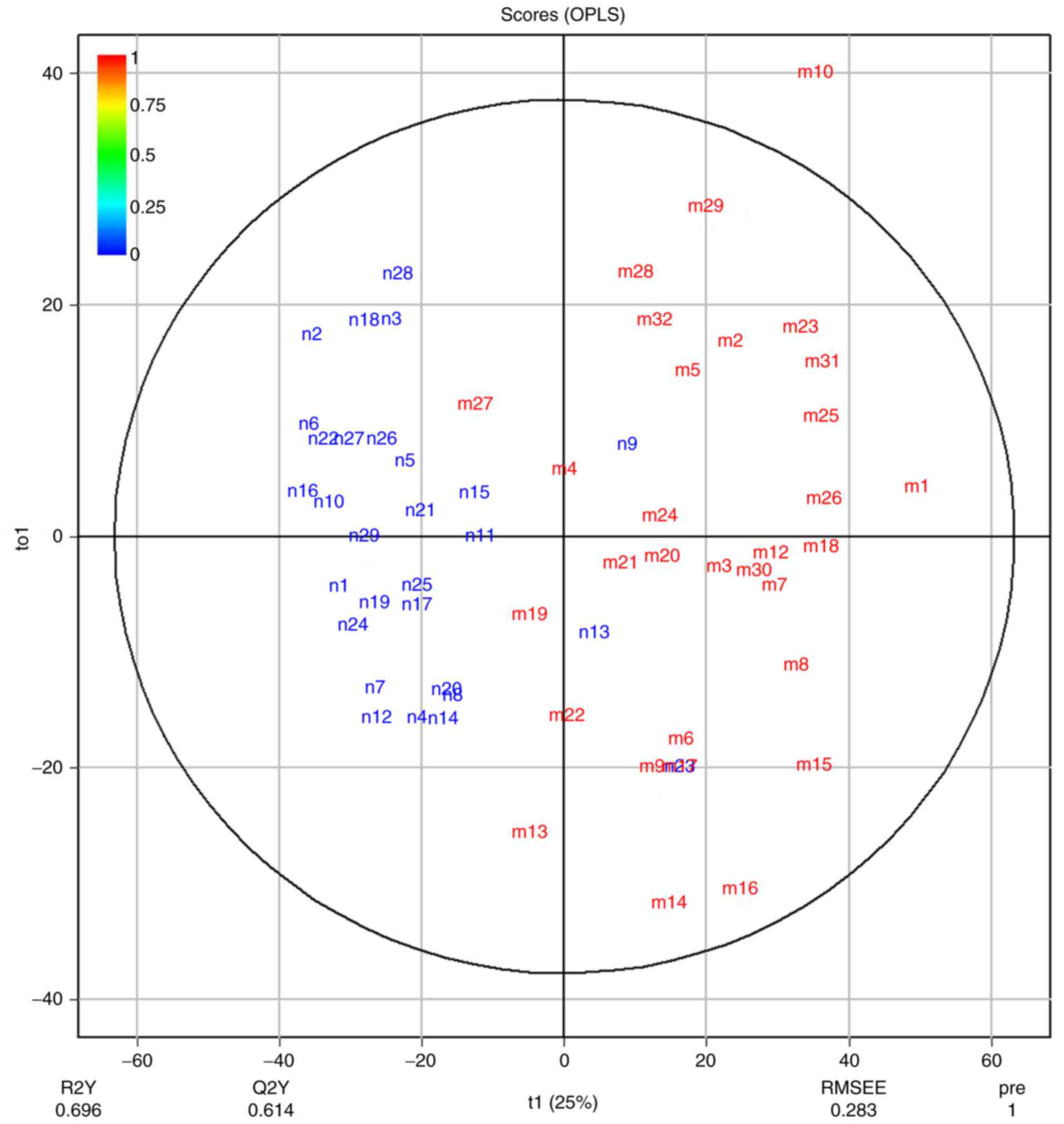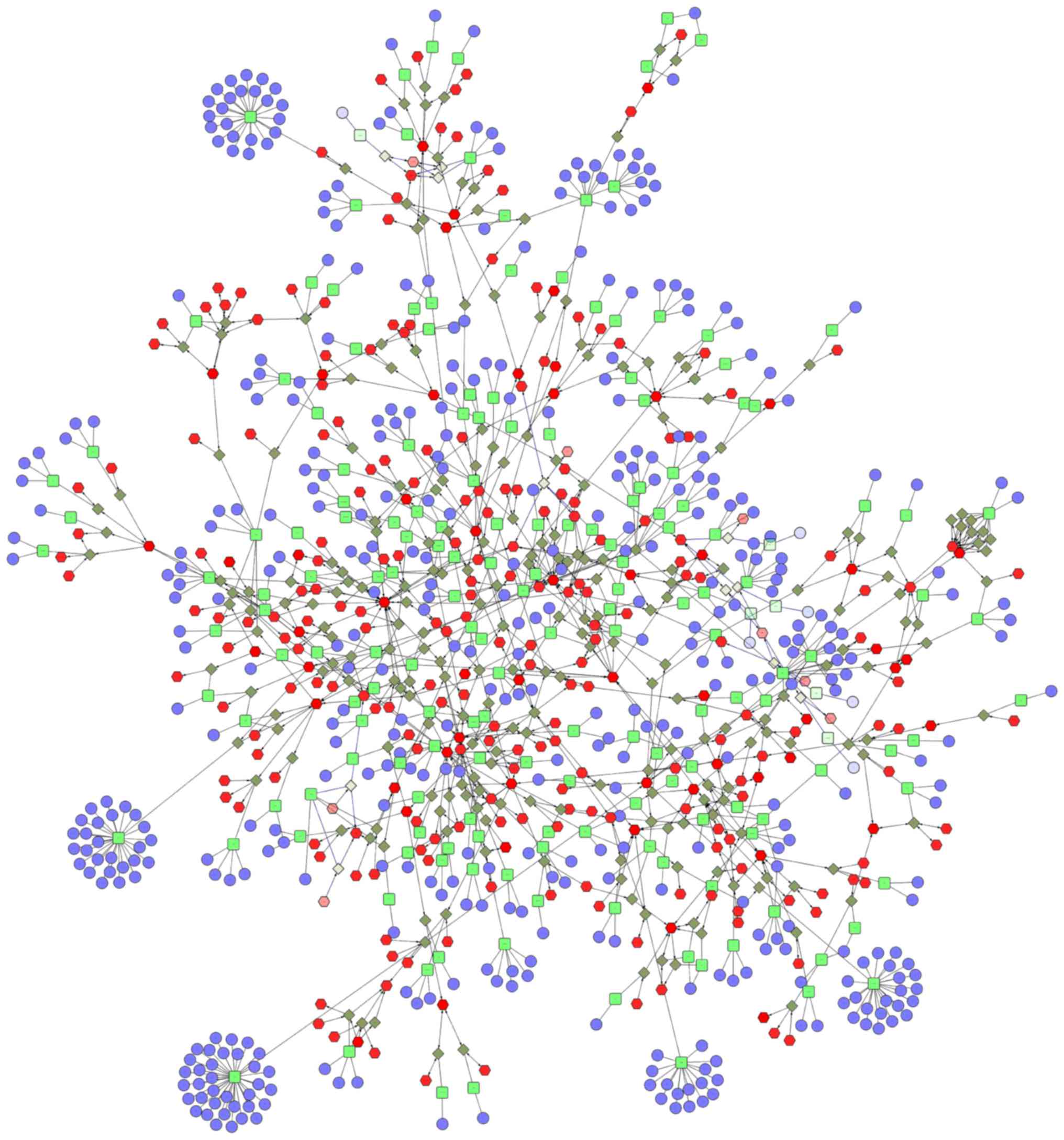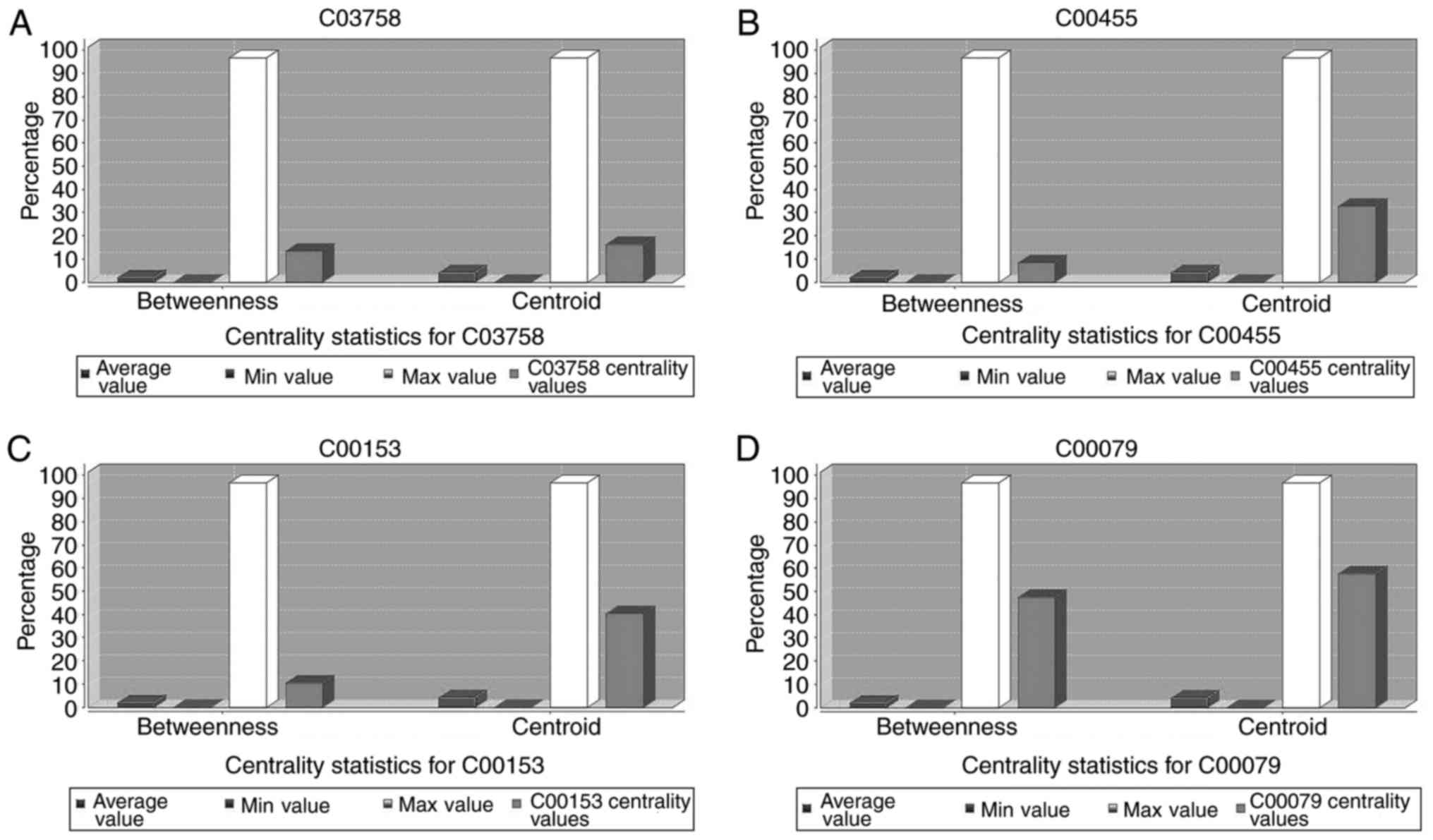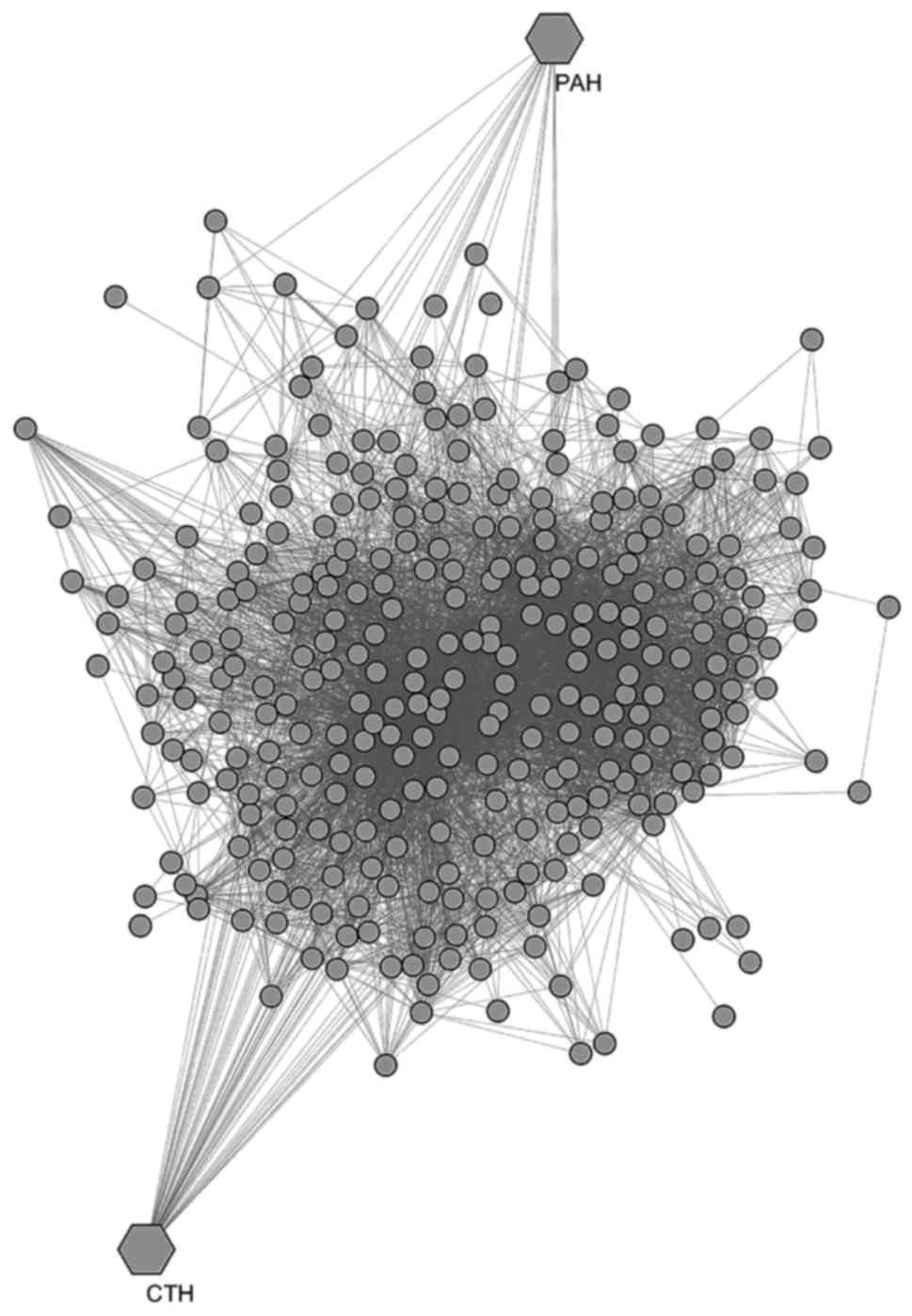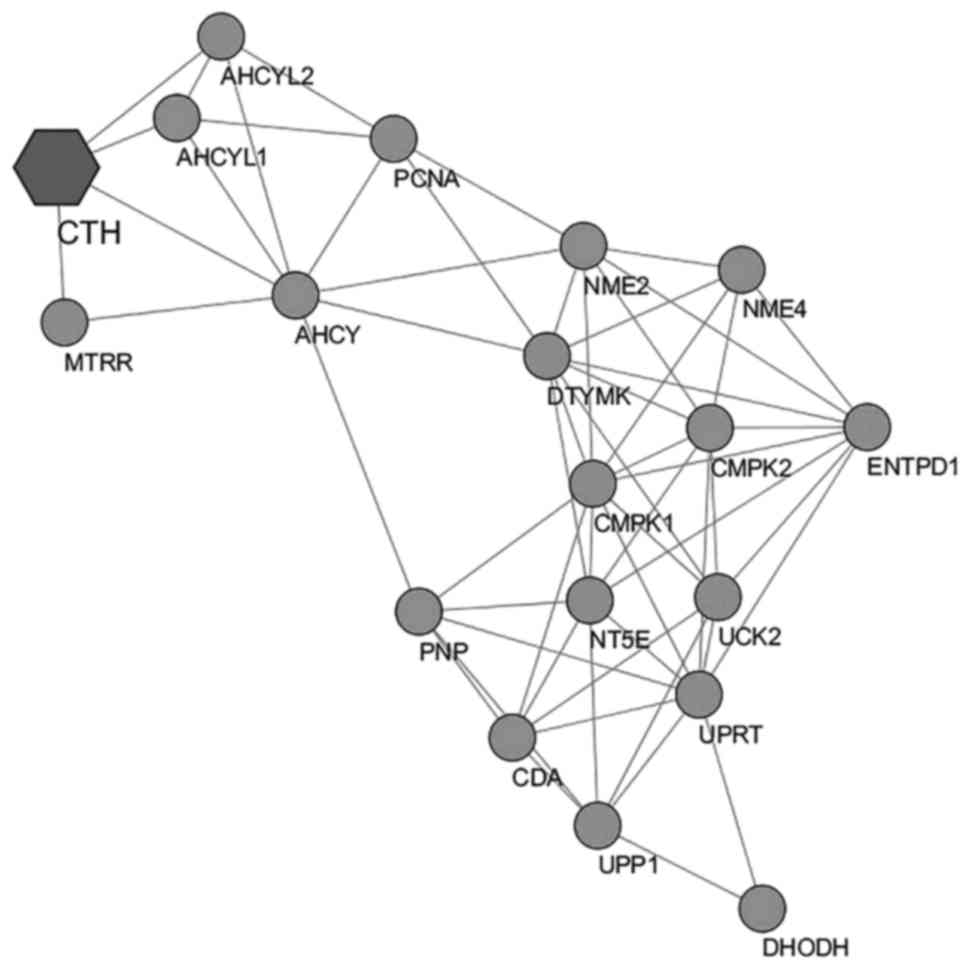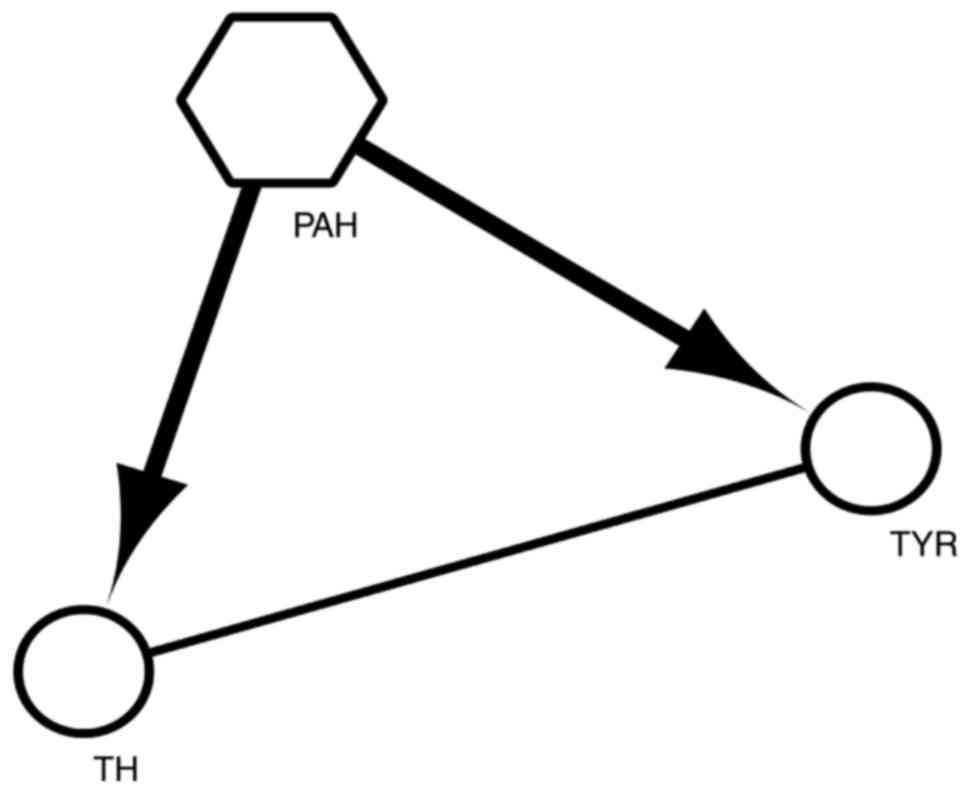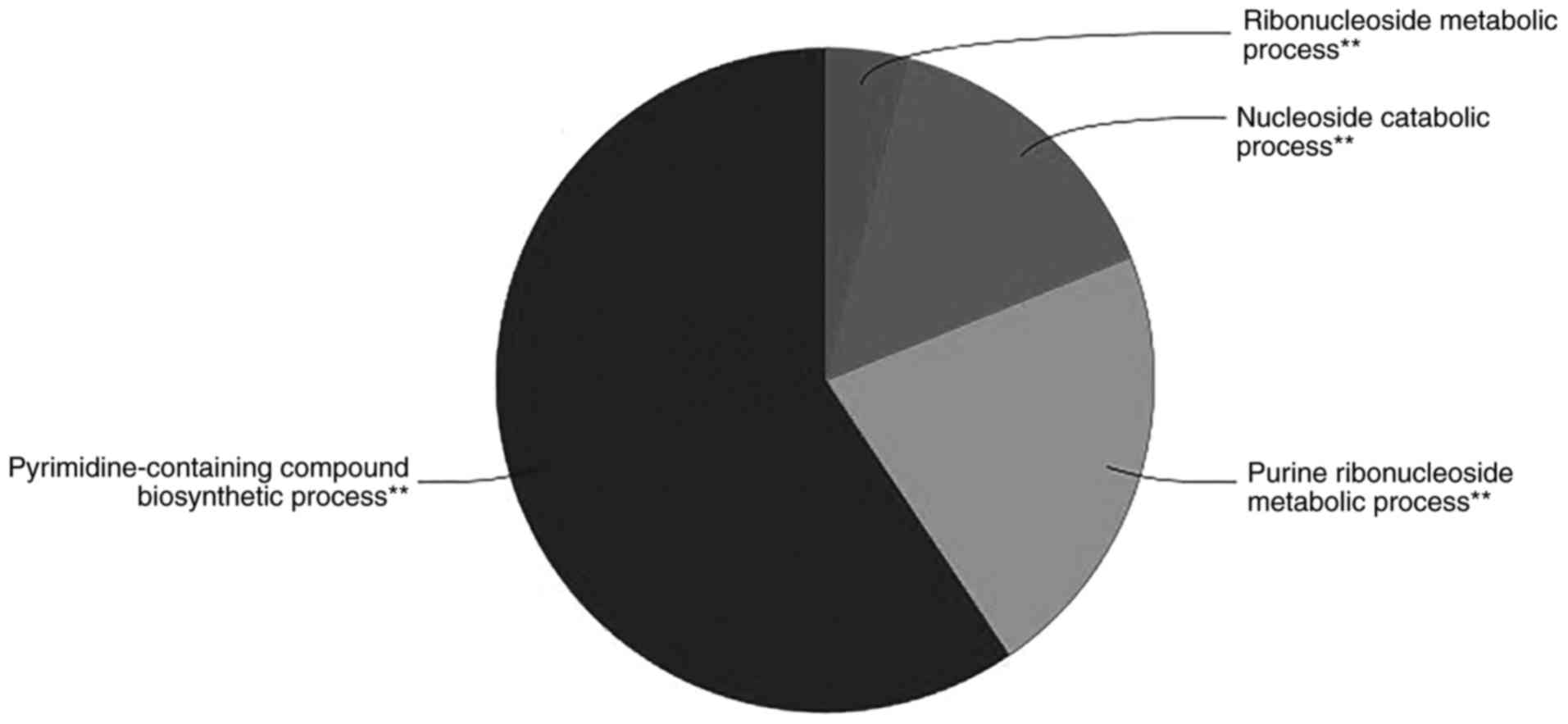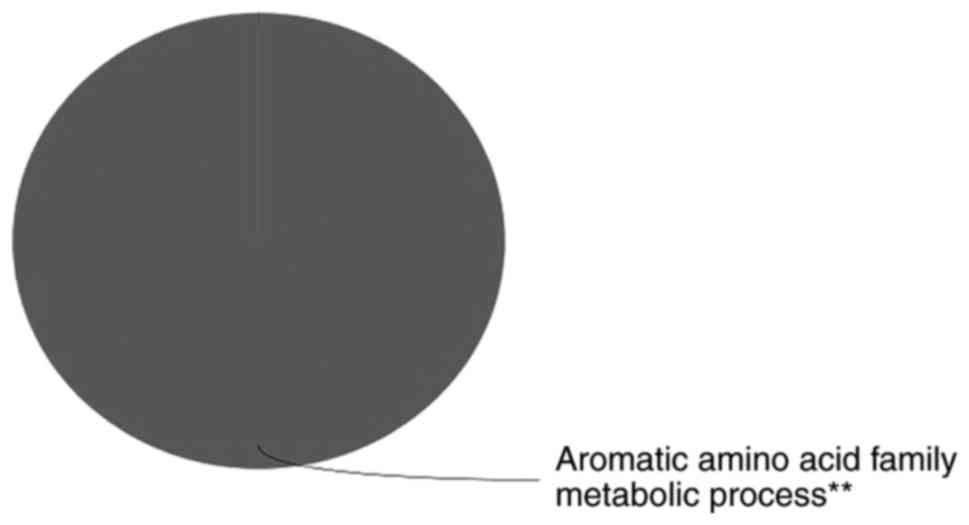|
1
|
Cattran DC: Idiopathic membranous
glomerulonephritis. Kidney Int. 59:1983–1994. 2001. View Article : Google Scholar : PubMed/NCBI
|
|
2
|
Kubota K, Hoshino J, Ueno T, Mise K, Hazue
R, Sekine A, Yabuuchi J, Yamanouchi M, Suwabe T, Kikuchi K, et al:
Phospholipase A2 Receptor-positive idiopathic membranous
glomerulonephritis with onset at 95 years: Case report. Case Rep
Nephrol Dial. 6:76–82. 2016. View Article : Google Scholar : PubMed/NCBI
|
|
3
|
Rivera F, Lopez-Gomez JM and Perez-Garcia
R; Spanish Registry of Glomerulonephritis, : Clinicopathologic
correlations of renal pathology in Spain. Kidney Int. 66:898–904.
2004. View Article : Google Scholar : PubMed/NCBI
|
|
4
|
Santos FR: Membranous glomerulonephritis:
New insights in pathophysiology and therapeutic approach. J Bras
Nefrol. 36:59–62. 2014.(In Portuguese). View Article : Google Scholar : PubMed/NCBI
|
|
5
|
Huang YM, Zhou HR, Zhang L, Yang KK, Luo
JX and Zhao HL: Spontaneous remission of membranous
glomerulonephritis with successful fetal outcome: A case report and
literature review. Medicine (Baltimore). 95:e40222016. View Article : Google Scholar : PubMed/NCBI
|
|
6
|
Bomback AS and Fervenza FC: Membranous
nephropathy: Approaches to treatment. Am J Nephrol. 47 Suppl
1:S30–S42. 2018. View Article : Google Scholar
|
|
7
|
Bertelli R, Bonanni A, Caridi G, Canepa A
and Ghiggeri GM: Molecular and cellular mechanisms for proteinuria
in minimal change disease. Fron Med (Lausanne). 5:1702018.
View Article : Google Scholar
|
|
8
|
Shimada S, Nakamichi T, Yamada G, Narumi
K, Usubuchi H, Yamamoto T, Ichikawa S, Fukuhara N, Miyazaki M,
Harigae H, et al: Concurrent isolated IgG2-positive membranous
nephropathy and malignant B-cell lymphoma. CEN Case Rep.
15–May;2018.(Epub ahead of print). View Article : Google Scholar :
|
|
9
|
Liu J and Wang W: Genetic basis of
adult-onset nephrotic syndrome and focal segmental
glomerulosclerosis. Front Med. 11:333–339. 2017. View Article : Google Scholar : PubMed/NCBI
|
|
10
|
Passos EM, Legallicier B and Godin M:
Membranous nephropathy. Rev Prat. 53:2033–2038. 2003.(In French).
PubMed/NCBI
|
|
11
|
Tang KT, Tseng CH, Hsieh TY and Chen DY:
Induction therapy for membranous lupus nephritis: A systematic
review and network meta-analysis. Int J Rheum Dis. 21:1163–1172.
2018. View Article : Google Scholar : PubMed/NCBI
|
|
12
|
Peng L, Wei SY, Li LT, He YX and Li B:
Comparison of different therapies in high-risk patients with
idiopathic membranous nephropathy. J Formos Med Assoc. 115:11–18.
2016. View Article : Google Scholar : PubMed/NCBI
|
|
13
|
Kraut JA and Madias NE: Adverse effects of
the metabolic acidosis of chronic kidney disease. Adv Chronic
Kidney Dis. 24:289–297. 2017. View Article : Google Scholar : PubMed/NCBI
|
|
14
|
Lai WL, Yeh TH, Chen PM, Chan CK, Chiang
WC, Chen YM, Wu KD and Tsai TJ: Membranous nephropathy: A review on
the pathogenesis, diagnosis, and treatment. J Formos Med Assoc.
114:102–111. 2015. View Article : Google Scholar : PubMed/NCBI
|
|
15
|
Abedi M and Gheisari Y: Nodes with high
centrality in protein interaction networks are responsible for
driving signaling pathways in diabetic nephropathy. PeerJ.
3:e12842015. View Article : Google Scholar : PubMed/NCBI
|
|
16
|
Debnath M, Prasad GB and Bisen PS: Omics
technologymolecular diagnostics: Promises and Possibilities.
Springer; pp. 11–31. 2010
|
|
17
|
Nagana Gowda GA and Raftery D: Can NMR
solve some significant challenges in metabolomics? J Magn Reson.
260:144–160. 2015. View Article : Google Scholar : PubMed/NCBI
|
|
18
|
Markley JL, Brüschweiler R, Edison AS, et
al: The future of NMR-based metabolomics. Curr Opin Biotechnol.
43:34–40. 2017. View Article : Google Scholar : PubMed/NCBI
|
|
19
|
Dettmer K, Aronov PA and Hammock BD: Mass
spectrometry-based metabolomics. Mass Spectrom Rev. 26:51–78. 2007.
View Article : Google Scholar : PubMed/NCBI
|
|
20
|
Bingol K and Brüschweiler R: Two elephants
in the room: New hybrid nuclear magnetic resonance and mass
spectrometry approaches for metabolomics. Curr Opin Clin Nutr Metab
Care. 18:471–477. 2015. View Article : Google Scholar : PubMed/NCBI
|
|
21
|
Sui W, Li L, Che W, Guimai Z, Chen J, Li W
and Dai Y: A proton nuclear magnetic resonance-based metabonomics
study of metabolic profiling in immunoglobulin a nephropathy.
Clinics (Sao Paulo). 67:363–373. 2012. View Article : Google Scholar : PubMed/NCBI
|
|
22
|
Ahmed KA and Chinnaiyan P: Applying
metabolomics to understand the aggressive phenotype and identify
novel therapeutic targets in glioblastoma. Metabolites. 4:740–750.
2014. View Article : Google Scholar : PubMed/NCBI
|
|
23
|
Nobakht BF, Aliannejad R, Rezaei-Tavirani
M, Arefi Oskouie A, Naseri MT, Parastar H, Aliakbarzadeh G, Fathi F
and Taheri S: NMR-and GC/MS-based metabolomics of sulfur mustard
exposed individuals: A pilot study. Biomarkers. 21:479–489. 2016.
View Article : Google Scholar : PubMed/NCBI
|
|
24
|
Zhang GQ and Hirasaki GJ: CPMG relaxation
by diffusion with constant magnetic field gradient in a restricted
geometry: Numerical simulation and application. J Magn Reson.
163:81–91. 2003. View Article : Google Scholar : PubMed/NCBI
|
|
25
|
Brown FF, Campbell ID, Kuchel PW and
Rabenstein DC: Human erythrocyte metabolism studies by 1H spin echo
NMR. FEBS Lett. 82:12–16. 1977. View Article : Google Scholar : PubMed/NCBI
|
|
26
|
Viant MR: Improved methods for the
acquisition and interpretation of NMR metabolomic data. Biochem
Biophys Res Commun. 310:943–948. 2003. View Article : Google Scholar : PubMed/NCBI
|
|
27
|
Holmes E, Foxall PJ, Nicholson JK, Neild
GH, Brown SM, Beddell CR, Sweatman BC, Rahr E, Lindon JC, Spraul M,
et al: Automatic data reduction and pattern recognition methods for
analysis of 1H nuclear magnetic resonance spectra of human urine
from normal and pathological states. Anal Biochem. 220:284–296.
1994. View Article : Google Scholar : PubMed/NCBI
|
|
28
|
Gavaghan CL, Holmes E, Lenz E, Wilson ID
and Nicholson JK: An NMR-based metabonomic approach to investigate
the biochemical consequences of genetic strain differences:
Application to the C57BL10J and Alpk: ApfCD mouse. FEBS Lett.
484:169–174. 2000. View Article : Google Scholar : PubMed/NCBI
|
|
29
|
Holmes E, Nicholson JK, Nicholls AW,
Lindon JC, Connor SC, Polley S and Connelly J: The identification
of novel biomarkers of renal toxicity using automatic data
reduction techniques and PCA of proton NMR spectra of urine.
Chemometrics Intelligent Lab Systems. 44:245–255. 1998. View Article : Google Scholar
|
|
30
|
Gao J, Tarcea VG, Karnovsky A, Mirel BR,
Weymouth TE, Beecher CW, Cavalcoli JD, Athey BD, Omenn GS, Burant
CF and Jagadish HV: Metscape: A Cytoscape plug-in for visualizing
and interpreting metabolomic data in the context of human metabolic
networks. Bioinformatics. 26:971–973. 2010. View Article : Google Scholar : PubMed/NCBI
|
|
31
|
Ma H, Sorokin A, Mazein A, Selkov A,
Selkov E, Demin O and Goryanin I: The Edinburgh human metabolic
network reconstruction and its functional analysis. Mol Syst Biol.
3:1352007. View Article : Google Scholar : PubMed/NCBI
|
|
32
|
Wishart DS, Tzur D, Knox C, Eisner R, Guo
AC, Young N, Cheng D, Jewell K, Arndt D, Sawhney S, et al: HMDB:
The human metabolome database. Nucleic Acids Res. 35(Database
Issue): D521–D526. 2007. View Article : Google Scholar : PubMed/NCBI
|
|
33
|
Kanehisa M and Goto S: KEGG: Kyoto
encyclopedia of genes and genomes. Nucleic Acids Res. 28:27–30.
2000. View Article : Google Scholar : PubMed/NCBI
|
|
34
|
Karnovsky A, Weymouth T, Hull T, Tarcea
VG, Scardoni G, Laudanna C, Sartor MA, Stringer KA, Jagadish HV,
Burant C, et al: Metscape 2 bioinformatics tool for the analysis
and visualization of metabolomics and gene expression data.
Bioinformatics. 28:373–380. 2011. View Article : Google Scholar : PubMed/NCBI
|
|
35
|
Hao T, Peng W, Wang Q, Wang B and Sun J:
Reconstruction and application of protein-protein interaction
network. Int J Mol Sci. 17(pii): E9072016. View Article : Google Scholar : PubMed/NCBI
|
|
36
|
Zali H and Rezaei Tavirani M: Meningioma
protein-protein interaction network. Arch Iran Med. 17:262–272.
2014.PubMed/NCBI
|
|
37
|
Szklarczyk D, Morris JH, Cook H, Kuhn M,
Wyder S, Simonovic M, Santos A, Doncheva NT, Roth A, Bork P, et al:
The STRING database in 2017: Quality-controlled protein-protein
association networks, made broadly accessible. Nucleic Acids Res.
45:D362–D368. 2017. View Article : Google Scholar : PubMed/NCBI
|
|
38
|
Saito R, Smoot ME, Ono K, Ruscheinski J,
Wang PL, Lotia S, Pico AR, Bader GD and Ideker T: A travel guide to
Cytoscape plugins. Nature Methods. 9:1069–1076. 2012. View Article : Google Scholar : PubMed/NCBI
|
|
39
|
Bader GD and Hogue CW: An automated method
for finding molecular complexes in large protein interaction
networks. BMC Bioinformatics. 4:22003. View Article : Google Scholar : PubMed/NCBI
|
|
40
|
Bindea G, Mlecnik B, Hackl H, Charoentong
P, Tosolini M, Kirilovsky A, Fridman WH, Pagès F, Trajanoski Z and
Galon J: ClueGO: A Cytoscape plug-in to decipher functionally
grouped gene ontology and pathway annotation networks.
Bioinformatics. 25:1091–1093. 2009. View Article : Google Scholar : PubMed/NCBI
|
|
41
|
Hallan S, Afkarian M, Zelnick LR,
Kestenbaum B, Sharma S, Saito R, Darshi M, Barding G, Raftery D, Ju
W, et al: Metabolomics and gene expression analysis reveal
down-regulation of the citric acid (TCA) cycle in non-diabetic CKD
patients. EBioMedicine. 26:68–77. 2017. View Article : Google Scholar : PubMed/NCBI
|
|
42
|
Toyohara T, Akiyama Y, Suzuki T, Takeuchi
Y, Mishima E, Tanemoto M, Momose A, Toki N, Sato H, Nakayama M, et
al: Metabolomic profiling of uremic solutes in CKD patients.
Hypertens Res. 33:944–952. 2010. View Article : Google Scholar : PubMed/NCBI
|
|
43
|
Lin IC, Hsu CN, Lo MH, Chien SJ and Tain
YL: Low urinary citrulline/arginine ratio associated with blood
pressure abnormalities and arterial stiffness in childhood chronic
kidney disease. J Am Soc Hypertens. 10:115–123. 2016. View Article : Google Scholar : PubMed/NCBI
|
|
44
|
Janssen B, Hohenadel D, Brinkkoetter P,
Peters V, Rind N, Fischer C, Rychlik I, Cerna M, Romzova M, de Heer
E, et al: Carnosine as a protective factor in diabetic nephropathy:
Association with a leucine repeat of the carnosinase gene CNDP1.
Diabetes. 54:2320–2327. 2005. View Article : Google Scholar : PubMed/NCBI
|
|
45
|
Albrecht T, Schilperoort M, Zhang S, Braun
JD, Qiu J, Rodriguez A, Pastene DO, Krämer BK, Köppel H, Baelde H,
et al: Carnosine attenuates the development of both type 2 diabetes
and diabetic nephropathy in BTBR ob/ob mice. Sci Rep. 7:444922017.
View Article : Google Scholar : PubMed/NCBI
|
|
46
|
Kaori H, Hiroyuki S, Takako H, Makoto S,
Satsuki I, Tomoyoshi S and Hiroshi I: Use of serum and urine
metabolome analysis for the detection of metabolic changes in
patients with stage 1–2 chronic kidney disease. Nephrourol Monthly.
2011:164–171. 2011.
|
|
47
|
Ulvik A, Midttun Ø, Pedersen ER, Eussen
SJ, Nygård O and Ueland PM: Evidence for increased catabolism of
vitamin B-6 during systemic inflammation. Am J Clin Nutr.
100:250–255. 2014. View Article : Google Scholar : PubMed/NCBI
|
|
48
|
Chen CH, Yeh EL, Chen CC, Huang SC and
Huang YC: Vitamin B-6, independent of homocysteine, is a
significant factor in relation to inflammatory responses for
chronic kidney disease and hemodialysis patients. Biomed Res Int.
2017:73678312017. View Article : Google Scholar : PubMed/NCBI
|
|
49
|
Zhang P, Tsuchiya K, Kinoshita T,
Kushiyama H, Suidasari S, Hatakeyama M, Imura H, Kato N and Suda T:
Vitamin B6 prevents IL-1β protein production by inhibiting nlrp3
inflammasome activation. J Biol Chem. 291:24517–24527. 2016.
View Article : Google Scholar : PubMed/NCBI
|
|
50
|
Egashira Y, Nagaki S and Sanada H:
Tryptophan-niacin metabolism in rat with puromycin
aminonucleoside-induced nephrosis. Int J Vitam Nutr Res. 76:28–33.
2006. View Article : Google Scholar : PubMed/NCBI
|
|
51
|
Zhao X, Wu H, Guo B, Dong R, Qiu Y and Ma
PX: Antibacterial anti-oxidant electroactive injectable hydrogel as
self-healing wound dressing with hemostasis and adhesiveness for
cutaneous wound healing. Biomaterials. 122:34–47. 2017. View Article : Google Scholar : PubMed/NCBI
|
|
52
|
Demaria M, Ohtani N, Youssef SA, Rodier F,
Toussaint W, Mitchell JR, Laberge RM, Vijg J, Van Steeg H, Dollé
ME, et al: An essential role for senescent cells in optimal wound
healing through secretion of PDGF-AA. Dev Cell. 31:722–733. 2014.
View Article : Google Scholar : PubMed/NCBI
|
|
53
|
Wang WJ, Cai GY and Chen XM: Cellular
senescence, senescence-associated secretory phenotype, and chronic
kidney disease. Oncotarget. 8:64520–64533. 2017.PubMed/NCBI
|
|
54
|
Kume S, Haneda M, Kanasaki K, Sugimoto T,
Araki S, Isshiki K, Isono M, Uzu T, Guarente L, Kashiwagi A and
Koya D: SIRT1 inhibits transforming growth factor beta-induced
apoptosis in glomerular mesangial cells via Smad7 deacetylation. J
Biol Chem. 282:151–158. 2007. View Article : Google Scholar : PubMed/NCBI
|
|
55
|
Kume S, Haneda M, Kanasaki K, Sugimoto T,
Araki S, Isono M, Isshiki K, Uzu T, Kashiwagi A and Koya D: Silent
information regulator 2 (SIRT1) attenuates oxidative stress-induced
mesangial cell apoptosis via p53 deacetylation. Free Radical Biol
Med. 40:2175–2182. 2006. View Article : Google Scholar
|
|
56
|
Li C, Cai F, Yang Y, Zhao X, Wang C, Li J,
Jia Y, Tang J and Liu Q: Tetrahydroxystilbene glucoside ameliorates
diabetic nephropathy in rats: Involvement of SIRT1 and TGF-β1
pathway. Eur J Pharmacol. 649:382–389. 2010. View Article : Google Scholar : PubMed/NCBI
|
|
57
|
Kalantari S, Nafar M, Samavat S, Parvin M,
Nobakht M Gh BF and Barzi F: 1H NMR-based metabolomics exploring
urinary biomarkers correlated with proteinuria in focal segmental
glomerulosclerosis: A pilot study. Magn Reson Chem. Jun
19–2016.(Epub ahead of print). View Article : Google Scholar : PubMed/NCBI
|
|
58
|
Revollo JR, Grimm AA and Imai S: The
regulation of nicotinamide adenine dinucleotide biosynthesis by
Nampt/PBEF/visfatin in mammals. Curr Opin Gastroenterol.
23:164–170. 2007. View Article : Google Scholar : PubMed/NCBI
|
|
59
|
Chen Y, Liang Y, Hu T, Wei R, Cai C, Wang
P, Wang L, Qiao W and Feng L: Endogenous Nampt upregulation is
associated with diabetic nephropathy inflammatory-fibrosis through
the NF-κB p65 and Sirt1 pathway; NMN alleviates diabetic
nephropathy inflammatory-fibrosis by inhibiting endogenous Nampt.
Exp Ther Med. 14:4181–4193. 2017.PubMed/NCBI
|
|
60
|
Hasegawa K, Wakino S, Simic P, Sakamaki Y,
Minakuchi H, Fujimura K, Hosoya K, Komatsu M, Kaneko Y, Kanda T, et
al: Renal tubular Sirt1 attenuates diabetic albuminuria by
epigenetically suppressing Claudin-1 overexpression in podocytes.
Nat Med. 19:1496–1504. 2013. View Article : Google Scholar : PubMed/NCBI
|
|
61
|
Helmering J, Juan T, Li CM, Chhoa M, Baron
W, Gyuris T, Richards WG, Turk JR, Lawrence J, Cosgrove PA, et al:
A mutation in Ampd2 is associated with nephrotic syndrome and
hypercholesterolemia in mice. Lipids Health Dis. 13:1672014.
View Article : Google Scholar : PubMed/NCBI
|
|
62
|
Kalantari S, Nafar M, Samavat S and Parvin
M: 1 H NMR-based metabolomics study for identifying urinary
biomarkers and perturbed metabolic pathways associated with
severity of IgA nephropathy: A pilot study. Magn Reson Chem.
55:693–699. 2017. View Article : Google Scholar : PubMed/NCBI
|
|
63
|
Furman PA, Lambe CU and Nelson DJ: Effect
of acyclovir on the deoxyribonucleoside triphosphate pool levels in
vero cells infected with herpes simplex virus type 1. Am J Med.
73:14–17. 1982. View Article : Google Scholar : PubMed/NCBI
|
|
64
|
Gamboa JL, Billings FT VI, Bojanowski MT,
Gilliam LA, Yu C, Roshanravan B, Roberts LJ II, Himmelfarb J,
Ikizler TA and Brown NJ: Mitochondrial dysfunction and oxidative
stress in patients with chronic kidney disease. Physiol Rep.
4(pii): e127802016. View Article : Google Scholar : PubMed/NCBI
|
|
65
|
Xia JF, Hu P, Liang QL, Zou TT, Wang YM
and Luo GA: Correlations of creatine and six related pyrimidine
metabolites and diabetic nephropathy in Chinese type 2 diabetic
patients. Clin Biochem. 43:957–962. 2010. View Article : Google Scholar : PubMed/NCBI
|
|
66
|
Tyburski JB, Patterson AD, Krausz KW,
Slavík J, Fornace AJ Jr, Gonzalez FJ and Idle JR: Radiation
metabolomics. 2. Dose-and time-dependent urinary excretion of
deaminated purines and pyrimidines after sublethal gamma-radiation
exposure in mice. Radiat Res. 172:42–57. 2009. View Article : Google Scholar : PubMed/NCBI
|
|
67
|
Gu X, Shivarov V and Strout MP: The role
of activation-induced cytidine deaminase in lymphomagenesis. Curr
Opin Hematol. 19:292–298. 2012. View Article : Google Scholar : PubMed/NCBI
|
|
68
|
Marusawa H, Takai A and Chiba T: Role of
activation-induced cytidine deaminase in inflammation-associated
cancer development. Advances in immunology Elsevier. 109–141. 2011.
View Article : Google Scholar
|
|
69
|
Arakaki AK, Mezencev R, Bowen NJ, Huang Y,
McDonald JF and Skolnick J: Identification of metabolites with
anticancer properties by computational metabolomics. Mol Cancer.
7:572008. View Article : Google Scholar : PubMed/NCBI
|
|
70
|
Li R, Dai J and Kang H: The construction
of a panel of serum amino acids for the identification of early
chronic kidney disease patients. J Clin Lab Anal. 32:2018.
View Article : Google Scholar
|
|
71
|
Li J, Xie XW, Zhou H, Wang B, Zhang MJ and
Tang FY: Metabolic profiling reveals new serum biomarkers of lupus
nephritis. Lupus. 26:1166–1173. 2017. View Article : Google Scholar : PubMed/NCBI
|
|
72
|
You YH, Quach T, Saito R, Pham J and
Sharma K: Metabolomics reveals a key role for fumarate in mediating
the effects of NADPH oxidase 4 in diabetic kidney disease. J Am Soc
Nephrol. 27:466–481. 2016. View Article : Google Scholar : PubMed/NCBI
|
|
73
|
Pestana M, Santos J, Santos A, Coroas A,
Correia F, Serrão P, Valbuena C and Soares-da-Silva P: Renal
dopamine and salt sensitivity of blood pressure in IgA nephropathy.
Kidney Blood Press Res. 27:78–87. 2004. View Article : Google Scholar : PubMed/NCBI
|
|
74
|
Zhang MZ, Yao B, Yang S, Yang H, Wang S,
Fan X, Yin H, Fogo AB, Moeckel GW and Harris RC: Intrarenal
dopamine inhibits progression of diabetic nephropathy. Diabetes.
61:2575–2584. 2012. View Article : Google Scholar : PubMed/NCBI
|
|
75
|
Gare M, Haviv YS, Ben-Yehuda A, Rubinger
D, Bdolah-Abram T, Fuchs S, Gat O, Popovtzer MM, Gotsman MS and
Mosseri M: The renal effect of low-dose dopamine in high-risk
patients undergoing coronary angiography. J Am Coll Cardiol.
34:1682–1688. 1999. View Article : Google Scholar : PubMed/NCBI
|
|
76
|
Sudarsky D and Nikolsky E:
Contrast-induced nephropathy in interventional cardiology. Int J
Nephrol Renovasc Dis. 4:85–99. 2011.PubMed/NCBI
|
|
77
|
Fitzpatrick PF: Tetrahydropterin-dependent
amino acid hydroxylases. Annu Rev Biochem. 68:355–381. 1999.
View Article : Google Scholar : PubMed/NCBI
|
|
78
|
Cherry JM, Hong EL, Amundsen C,
Balakrishnan R, Binkley G, Chan ET, Christie KR, Costanzo MC,
Dwight SS, Engel SR, et al: Saccharomyces Genome database: The
genomics resource of budding yeast. Nucleic Acids Res. 40(Database
Issue): D700–D705. 2012. View Article : Google Scholar : PubMed/NCBI
|
|
79
|
Dobrovolsky VN, Bucci T, Heflich RH,
Desjardins J and Richardson FC: Mice deficient for cytosolic
thymidine kinase gene develop fatal kidney disease. Mol Genet
Metab. 78:1–10. 2003. View Article : Google Scholar : PubMed/NCBI
|
|
80
|
Smith CL, Blake JA, Kadin JA, Richardson
JE and Bult CJ; Mouse Genome Database Group, : Mouse genome
database (MGD)-2018: Knowledgebase for the laboratory mouse.
Nucleic Acids Res. 46:D836–D842. 2017. View Article : Google Scholar :
|
|
81
|
Mazumder MK, Phukan BC, Bhattacharjee A
and Borah A: Disturbed purine nucleotide metabolism in chronic
kidney disease is a risk factor for cognitive impairment. Med
Hypotheses. 111:36–39. 2018. View Article : Google Scholar : PubMed/NCBI
|
|
82
|
Sarnak MJ, Tighiouart H, Scott TM, Lou KV,
Sorensen EP, Giang LM, Drew DA, Shaffi K, Strom JA, Singh AK and
Weiner DE: Frequency of and risk factors for poor cognitive
performance in hemodialysis patients. Neurology. 80:471–480. 2013.
View Article : Google Scholar : PubMed/NCBI
|
|
83
|
Apweiler R, Bairoch A, Wu CH, Barker WC,
Boeckmann B, Ferro S, Gasteiger E, Huang H, Lopez R, Magrane M, et
al: UniProt: The universal protein knowledgebase. Nucleic Acids
Res. 32(Database Issue): D115–D119. 2004. View Article : Google Scholar : PubMed/NCBI
|
|
84
|
Gromski PS, Muhamadali H, Ellis DI, Xu Y,
Correa E, Turner ML and Goodacre R: A tutorial review: Metabolomics
and partial least squares-discriminant analysis-a marriage of
convenience or a shotgun wedding. Anal Chim Acta. 879:10–23. 2015.
View Article : Google Scholar : PubMed/NCBI
|
|
85
|
Liland KH: Multivariate methods in
metabolomics-from pre-processing to dimension reduction and
statistical analysis. TrAC Trends Analytical Chemistry. 30:827–841.
2011. View Article : Google Scholar
|



